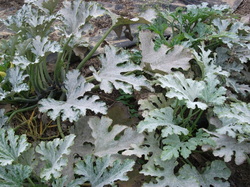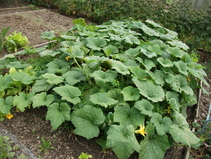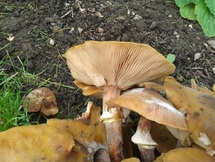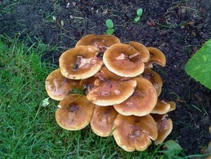
The culprit is mildew, usually worse if plants are dry at the root. This particular kind of mildew will reduce yields (because the leaves aren't working so efficiently) but doesn't kill the plant. If it appears early in the season, it is worth tackling - by September the plants are past their sell-by date anyway, so don't worry. If you don't want to use a fungicide (and personally I never like to spray anything I'm just about to eat!) then try this tip. Make up a solution of ordinary Bicarbonate of soda - how strong doesn't matter much - and spray the leaves regularly as a foliar feed. It helps control it. Planting over a trench of rotting compost helps avoid the roots getting dry - click here to go to our page with tips on on trench composting
Click here to go to an article on the "Gardening Know-How" website on using bicarbonate of soda to control mildew.
 Click on the pic to go to seed supplier
Click on the pic to go to seed supplier 

 RSS Feed
RSS Feed
